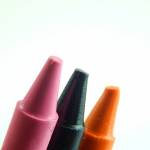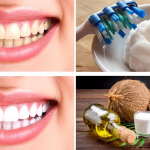Bathing is a tranquil escape for many, but the unwelcome sight of persistent bubbles lingering in the bathtub could cause frustration. Despite their seemingly harmless nature, excess bubbles can indicate issues with your cleaning products or water quality. In this article, we’ll explore various effective techniques that will help you get rid of those pesky bubbles and ensure a serene bath experience every time.
Understanding the Cause of Bathtub Bubbles
Soap Residue and Its Effects
At the heart of the bubble dilemma lies the soap residue. Soap remnants from bubble baths, shower gels, or bars often cling to the tub’s surface, and even when you think your bathtub is thoroughly rinsed, a mere film of soap could cause a frothy reaction the next time you fill the tub. This is especially true if your chosen cleaning products are formulated for rich lather. Some ingredients like sodium lauryl sulfate, known for its foaming properties, might not be fully water-soluble and thus contribute to the bubble issue.
Water Quality and Bubble Formation
Understanding water quality is crucial as it directly influences bubble formation. Hard water that contains higher levels of minerals like calcium or magnesium will not respond to soap in the same way as soft water. In fact, these minerals could also hamper the soap’s ability to dissolve properly, leading to increased bubble production. Conversely, soft water enhances the lathering effect, which, while great for a bubble bath, does not help when you’re looking to avoid surplus suds.

Preemptive Measures to Minimize Bubble Buildup
Selecting the Right Bath Products
- Opt for low-lathering or bubble-free bath products. These alternatives are designed to clean without creating an abundance of bubbles.
- Consider using bath oils or non-surfactant-based products which could help alleviate the bubble issue while still providing the desired cleaning effect.
Managing Water Conditions
Adjusting your water conditions might not be as straightforward as choosing different bath products, but it could also prove beneficial. For instance, installing a water softener system will not only reduce bubble troubles but could also extend the life of your plumbing. Regularly testing and treating your water will also help maintain its quality, ensuring a consistent bathing experience.
Effective Strategies for Bubble Removal
Physical Methods for Bubble Dissipation
When faced with a bathtub full of unwanted bubbles, employing physical methods could help speed up the dissipation process. Gently running your hand or a clean cloth over the surface breaks the surface tension, causing the bubbles to burst. Turning on the hot water faucet will also introduce more movement and heat into the tub, both of which help in reducing the number of bubbles.
Chemical Aids to Break Down Bubbles
Sometimes, a physical approach might not suffice, and that’s where chemical aids come into play. Various cleaning solutions, when applied appropriately, can effectively break down the soap that’s causing the excessive bubbles. These solutions include:
- White vinegar: A natural and versatile cleaning agent that cuts through soap scum.
- Baking soda: In combination with vinegar, creating a bubbling reaction that can neutralize soap bubbles.
However, it’s crucial to understand that not all cleaning products are suitable for every type of bathtub material. Incorrect use might not only be ineffective in removing bubbles but could also damage the tub’s surface. It’s vital to select cleaning solutions that are compatible with your bathtub.
| Bathtub Material | Recommended Cleaning Agent | Not Suitable For |
|---|---|---|
| Acrylic | Vinegar and water solution | Abrasive powders |
| Porcelain | Baking soda and vinegar mix | Highly acidic cleaners |
| Fiberglass | Gentle detergent solution | Bleach-based products |
While the varied approaches underway will help in the short-term, a consistent strategy and prevention should be the goal. As we delve deeper into long-term solutions and professional tips, remember that maintaining a bubble-free bathtub could require a combination of these remedies tailored to your specific situation.

Long-Term Solutions for a Bubble-Free Bath
Altering Bathing Habits
Over time, the choices we make in our bathing rituals could help reduce the likelihood of bubble build-up. One simple modification is reducing the quantity of soap used. It’s common to overestimate the amount of cleaning product required—to foster a bubble-free environment while still achieving cleanliness, using half the usual amount of soap will help. Additionally, consider rinsing the bathtub with cold water post-bath; this not only consolidates soap residue, making it easier to clean but also aids in deflating any remaining bubbles.
Regular Cleaning and Maintenance
Regular maintenance is the cornerstone of preserving a bubble-free bathtub. Consistent cleaning prevents soap scum accumulation, which in turn diminishes bubble formation. Incorporate a quick wipe-down into your daily routine using appropriate cleaning solutions that match your tub’s material. Weekly deep-clean sessions are also vital—scrubbing with non-abrasive products will assist in removing any residual soap film that daily cleansing might not address.
Expert Tips and Tricks
Natural Remedies and DIY Solutions
- Mix equal parts warm water and vinegar to spray and wipe down the tub after each use, preventing soap residue from forming.
- Create a natural scrub with baking soda and a small amount of water to address tougher areas without resorting to harsh chemicals.
When to Seek Professional Advice
There will also be instances when professional advice could expedite resolving your bubble troubles:
- When you’ve tried multiple methods with no success, a plumber could check for underlying issues with your water system that might not be evident.
- If your bathtub material requires particular care or you’re concerned about using the wrong cleaning products, a professional cleaner can provide guidance tailored to your needs.
Professionals not only come equipped with the right tools and knowledge but their expertise could also save time and prevent potential damage to your bathtub from incorrect cleaning techniques.

Conclusion
Persistent bubbles in your bathtub can disrupt the tranquility of your bathing experience, but armed with the knowledge and techniques detailed in this article, you can reclaim your sanctuary. From understanding the underlying causes and adopting preemptive measures, to hands-on bubble removal and employing long-term cleaning practices, you now have a full arsenal to tackle the foam. And when in doubt, remember that experts are just a call away to assist in returning your bathtub to its pristine, bubble-free state. Taking these proactive steps will ensure that unwelcome bathtub bubbles are nothing more than a distant memory.
FAQ
Q1: Can I prevent bubbles from forming completely?
A1: While it may be difficult to prevent bubbles entirely due to the nature of soap and water, you can minimize their formation by using less soap, choosing low-lather products, and incorporating regular cleaning practices that remove any potential residue.
Q2: Are there specific bath products that will help reduce bubble formation?
A2: Yes, using bath products designed for low lather or foam-free bathing experiences will help reduce bubble formation. Look for labels that indicate “bubble-free” or “low-sudsing” when selecting your products.
Q3: How often should I clean my bathtub to keep bubbles at bay?
A3: A quick rinse after each use and a thorough cleaning once a week is generally sufficient to keep soap residue and bubble formation under control.
Q4: What should I do if natural remedies are not effective in my bathtub?
A4: If natural remedies like vinegar and baking soda are not working, you might need to escalate to targeted cleaning products designed for your bathtub material. If bubbles still persist, consider consulting a professional.
Q5: Can hard water contribute to more bubbles in my bathtub?
A5: Yes, hard water contains minerals that can react with soap, creating more suds. Consider installing a water softener or using a water conditioner designed for baths to help manage the effects of hard water on bubble formation.


